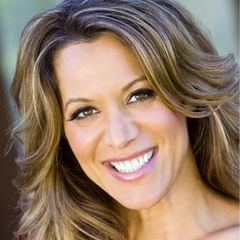To coach a client in making sustainable behavior changes, it’s imperative to recognize that the course of behavior changes occurs in a predictable, yet nonlinear cycle of phases known as the ACE Cycle of Change, which includes awareness, choice and execution. Knowing the client’s readiness to change gives you the proper tools and skills to tailor necessary behavior change using the ACE Cycle of Change as a framework.
The Awareness Phase
The awareness phase happens when a client first recognizes a gap between his or her current behavior and a desired behavior. This does not mean the client is actually ready to change.
The Choice Phase
The choice phase occurs after an individual has come to recognize that a behavior change is warranted. At this point, most clients will have an idea of what they hope the end outcome will be and are committed to taking steps toward that change.
The Execution Phase
The execution phase is when the client is ready to make the behavior change. The client has an idea of what he or she hopes the end outcome will be, has developed a plan to achieve this outcome and is now ready to begin the challenging, yet rewarding process of making the changes necessary to achieve his or her goals.
Consider the following scenario: A client who struggles with maintaining her ideal weight is frustrated with her erratic eating patterns when she is not on a structured diet plan.
What is this client’s current stage of change?
To assess the client’s phase in the Cycle of Change, ask questions that will help you to better understand what is driving the client to this behavior and why she is doing it.
Here is a sample dialogue that can help identify the client’s current stage of change:
Coach: “Thank you for coming in today. It is very nice to meet you. I think I have an idea as to why you are here, but would you be able to tell me in your own words?”
Client: “Yes. I really like when I am on a diet or specific food program, because I can follow the plan. I always lose the weight, but when I go off the diet, I regain the weight back. I would rather just be on a program all the time—it’s much easier and I do so much better.”
Coach: “What do you like most about being on a diet or food plan?”
Client: “I like knowing what, how much and when I can eat. When it is written out for me, I can follow it.”
Coach: “How many diet plans have you been on?”
Client: “I’ve been on a lot of different ones—a detox/cleanse, I’ve tried going vegetarian, various juice cleanses. I’ve even committed to cutting out sugar and snack food, like popcorn, crackers, cereal, etc.”
Coach: “What happened when you were on those diets?”
Client: “I did great at first, but then I would just start eating the foods I said I wasn’t going to eat. It’s so frustrating!”
Coach: “Why do you think you start to eat those foods again?”
Client: “I don’t know. I think it’s because I miss eating them. I start to focus on what I can’t eat and that’s it. I get to the point where I can't wait to eat those foods again. It's like an obsession.
Coach: “O.K. What foods do you like to eat?”
Client: “I like a lot of foods, even healthy ones such as salads, vegetables, smoothies, fruit, nuts and seeds, quinoa, a little chicken, turkey, salmon and sprouted bread. But I also really like snack-type foods such as popcorn, chips, bread and sweets.”
Coach: “Sounds like you have a long list of foods that are not only healthy choices, but ones you do like to eat.”
Client: “Yes, I really do like eating healthy food. I feel so much better when I eat them. It’s really not just about the weight that I lose. I just feel great when I eat well. I also seem to be more motivated to exercise.”
Coach: “Wow, sounds like you’ve already begun thinking about your own meal plan. How could you move forward with this information you told me today? What would be a next step?”
Client: “Well, I would be willing to make a list of all the healthy foods that I enjoy eating and I can at least start eating more of those foods. But I know that before long I will start picking and eating foods that are not on my list. I need help!”
Coach: “What would help you stay on track?”
Client: “I’ve kept a food log in the past that did work for a little bit and I guess I can do it again. If I know you will look at it the next time we meet, I know that will help me out. I’m sure I’ll be more careful about what I eat if I know you will be reviewing it.”
Coach: “It sounds like you are really motivated to change. Of course, we can do a follow-up where I can look at your food log. It’s important to know that I’m not going to judge you on what foods you eat. Think of it as more of an observation or awareness around the food you consume. I know you would like me to look at your journal, but what else would also help you be accountable?”
Client: “Well, my friend is super supportive. In fact, she is very motivating and inspiring. She’s offered to support and encourage me through this process.”
Coach: “Your friend sounds like a great role model for you. I just have another question for you. What can you do differently the next time you get the urge to eat foods that are not on your healthy list of foods? How can you break this pattern?”
Client: “The next time I start thinking I want to eat a snack food that is not on my plan, I can shift to thinking about the foods that are on my healthy food plan and choose something from that list instead. I can also think about how much better I will feel to eat something that is good for me without guilt or regret. I will write down my feelings before, during and after I eat so I stay conscious through the whole experience and do not start eating mindlessly or unconsciously.”
Coach: “You’ve come up with some great goals today. When should we check in for a follow up?”
Client: “ I would like to try writing down what I eat and my feelings before, during and after I eat, while focusing on my list of “healthy” foods to eat for a week. I will also get my friend involved and tell her what my goals are. So next week this time would be great.”
Coach: “It has been delightful to meet you. I look forward to meeting with you again next week.”
After speaking with this client, it is possible to determine this client’s ACE Cycle of Change is choice. She has come to terms with wanting to make a change and has committed to taking some steps toward that change.
Coaching a client through the Choice stage of change includes:
- 1. Using strategies and communication techniques to help set the stage for a successful change through goal setting, planning for successes and challenges, and establishing a positive mindset for approaching the change.
- 2. Helping clients set the best goals to fuel and inspire change.
- 3. Helping clients recognize and rely on their own strengths and assets to be successful.
- 4. Helping clients set and maintain a positive tone as they prepare to embark on the journey to a long-lasting behavior change.




 by
by 






 by
by